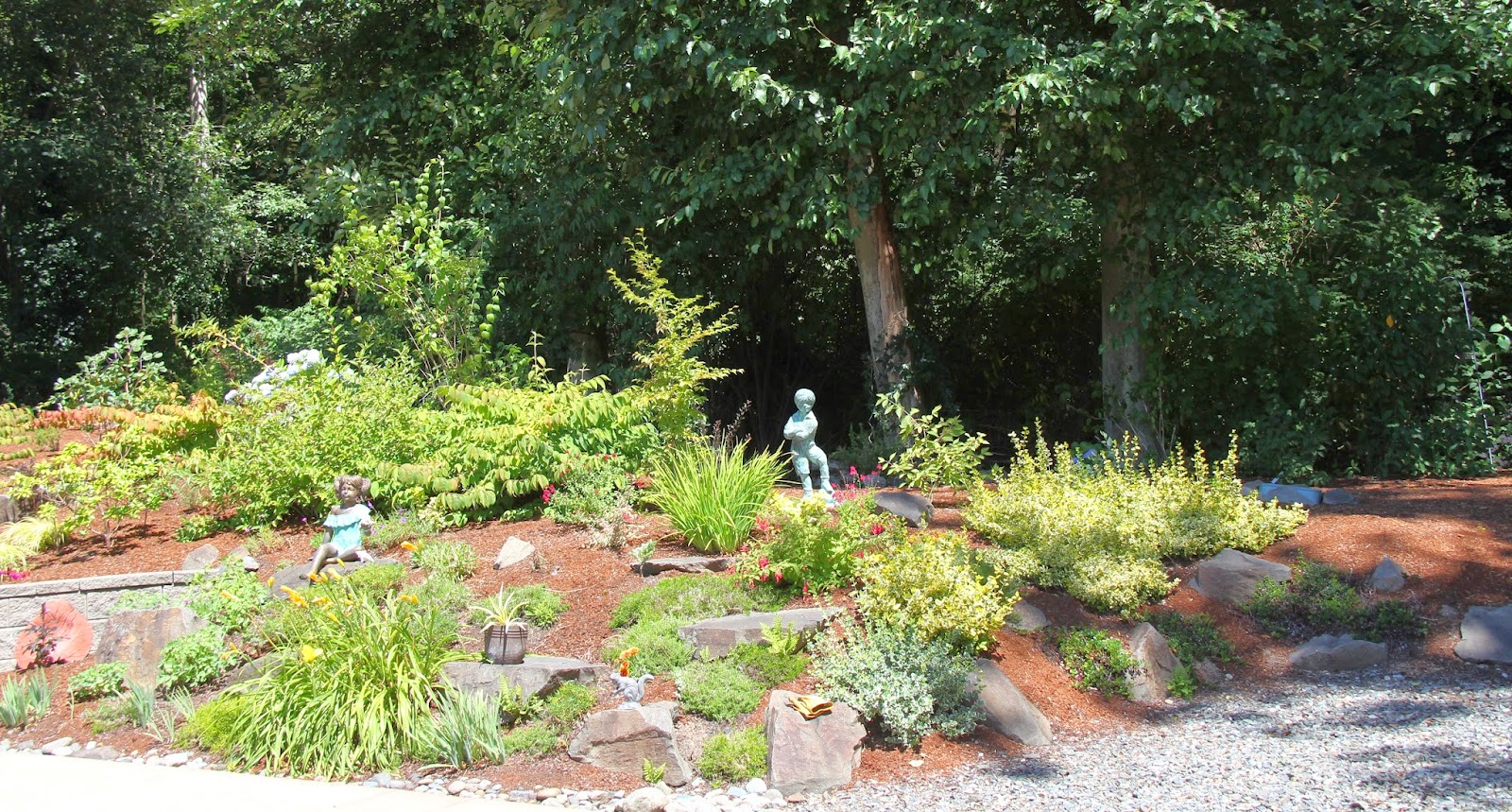Most of us don’t have sprawling estates that can
handle a variety of large shrubs and trees. For the smaller landscape areas,
what are some good choices of trees that will fit nicely and enhance the area?
I will share some of my favorites, most of which are thriving in my Puget Sound
area garden.
Lace leaf Maples are lovely in most Washington State
gardens. Acer palmatum dissectum ‘Red
Dragon’ is a particularly lovely variety that is happy in the sun (with adequate
water) or in the shade. Its scarlet leaves in the spring change to deep burgundy
in summer, then to blazing crimson in the fall. To minimize pruning, allow
space for it to grow to 7 feet wide.
The chestnut-brown peeling bark and fall foliage of Acer griseum make the Paperbark Maple a
desirable 18 foot tree for almost any environment – sun to shade and in a
variety of soils. Growing a little larger, to about 25 feet, the Acer palmatum 'Sango-kaku’ (Coral bark
Japanese Maple) is another useful small maple tree.
Korean dogwood (Cornus
kousa) trees are much less prone to dogwood anthracnose than Cornus florida. ‘Miss Satomi’ is an
outstanding pink-flowering choice and thrives in sun to light shade. Light pink
June flowers mature into rose-pink, lasting almost two months. Minimize pruning
of this 15 foot tree’s beautiful branching pattern.
A tree on my wish list is Parrotia persica ‘Vanessa’. With height of 15 feet and width of 10
feet, this variety of Persian ironwood is not as wide as the species. It’s colorful
foliage, irregular branch structure and exfoliating bark make it a four season tree.
The Stewartia is a must-have small tree. Both the Japanese Stewartia pseudocamellia and the
Orangebark Stewartia Monadelpha are
great in light to open shade in well-drained soil. Its features include
delicate saucer-shaped white flowers, beautiful cinnamon-brown bark and bright
orange-red fall leaf color. This disease-resistant tree wants little to no
pruning.
Cephalotaxus
harringtonia 'Fastigiata', the Japanese Plum Yew, is an evergreen that can
provide some year-round structure to the perennial garden. It is columnar,
slightly vase-shaped, for a nice contrast. Slow growing, it will take a long
time to get to 10 feet tall. Deer don’t like it – perhaps it’s the two-inch
long needles. The Plum Yew can tolerate low light condition, as well as full
sun.
Finally, the readily available Cupressus macrocarpa 'Wilma Goldcrest' is great for outdoor
containers. When it has grown too large, its yellow-green needles will brighten
up the garden, where it will grow slowly to 6 feet (eventually 15).
These small trees are just a sampling of many fine trees for
the modest landscape. By selecting samll and disease-resistant trees, you will have minimal maintenance and more leisure to enjoy your garden.
Japanese Plum Yew
Wilma cypress
Japanese Stewartia
Coral bark Maple in fall
Coral bark maple in winter
Red Dragon Lace Leaf Maple
Korean Dogwood























































